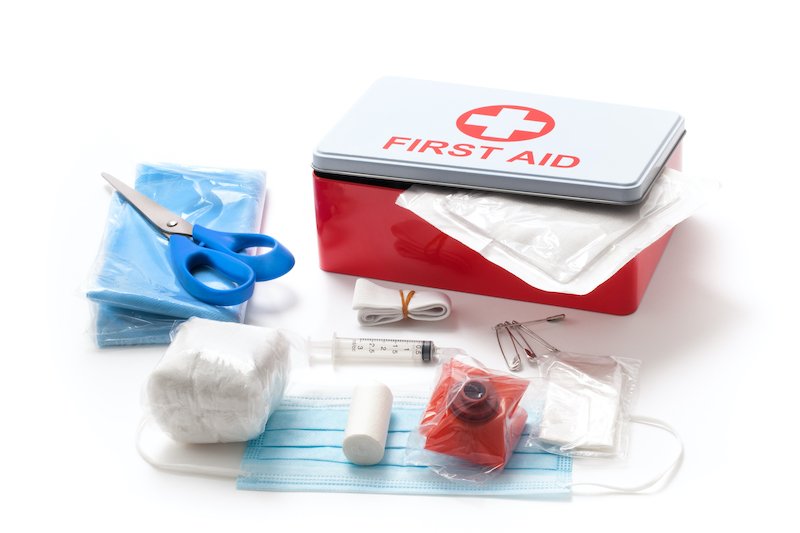If you are ever faced with a medical emergency at home, you’ll want to be prepared with your own first aid kit.
Alongside the completion of a first aid course, having a readily available first aid kit can help save lives.
Whether you purchase a ready-made first aid kit or assemble one yourself, you’ll want to ensure your kit is stocked with all the essential supplies you’ll need.
Start with the basics
The experts at 13 DOCTOR say make sure your home first aid kit is clearly labelled, and well-stocked with the following basic items.
Crepe and elastic bandages (various widths)
- to keep dressings in place
- to support a limb injury
- for applying pressure to a limb or a padded bleeding wound.
Medical tape (hypoallergenic)
- to hold bandages and gauze in place.
Triangular bandages
- for use as a sling
- for use as a broad-fold bandage
- for use as a narrow-fold bandage
- for use as an elevation sling
- for use as a pad for a bleeding wound.
Adhesive bandages and plasters (various widths)
- to cover wounds such as cuts, grazes, and blisters.
Gauze
- to clean, cover, pack or secure a wound.
Dressing pads (combine and non-stick)
- to control bleeding
- to cover burns or grazes.
Eye pads
- to protect eyes after injury
- to prevent eye infection.
Antiseptic swabs
- for cleaning and preparing skin for treatment.
Itch and sting creams
- for relieving discomfort from bites and stings.
Pain medication
- including ibuprofen, paracetamol or aspirin
- to relieve mild or moderate aches and pains.
Stainless steel scissors
- for trimming dressings and bandages
- to cut through clothing.
Disposable gloves
- for personal protection when treating an injured or sick person.
Stainless steel tweezers
- to remove splinters and foreign objects from skin
- to lift gauze when cleaning wounds.
Hot and cold packs
- to soothe muscle pain or sprains
- Ice packs to reduce swelling and inflammation.
Thermal blanket
- to manage body temperature.
Safety pins
- for securing bandages.
Sterile saline tubes
- to cleanse debris from eyes
- to cleanse small cuts or grazes.
First aid booklet
- for basic first aid guides, including techniques for resuscitation or treating injuries.
Thermometer
- for taking temperatures.
Disposable resuscitation face shield
- for personal protection when performing mouth to mouth resuscitation.
Rubbish bags
- for disposing contaminated materials and material packaging.
Notepad and marker
- for recording symptoms, times, temperatures, any important information.
Emergency contact list
- Include telephone numbers such as for emergency services, poison information centres, SES, and personal emergency contacts.
Customise for your household
You may need to customise your first aid kit depending on the health and lifestyle of those in your household. Some suggestions include:
- Storing extra basic supplies for additional household members
- Storing supplies that can be used on babies and small children
- Adding medication and equipment for known medical conditions (such as an asthma inhaler or EpiPen)
- Adding equipment for use when camping (such as a torch, poncho, compass, non-perishable food, and water)
- Adding equipment for use when boating (such as sunscreen, vinegar for stings, a whistle and a glow stick)
- Adding equipment for roadside emergencies (such as a reflective vest or safety triangle).
Maintain your kit
In an emergency, it is vital the contents of your first aid kit are ready to use. Keep your kit maintained by:
- Ensuring your kit is protected from dust and moisture
- Replacing any used supplies
- Checking the kit after each use (or every 12 months if not used) to remove any items which may have deteriorated or expired.
Preparing your household
It goes without saying that for your first aid kit to be an effective addition to your home, your household should know how to use it. Make sure the members of your home know where your home first aid kit is stored, and how to use the supplies. The 13 DOCTOR experts at House Call Doctor highly recommend adults, and even older children, complete a first aid course to be best prepared when facing an emergency.
